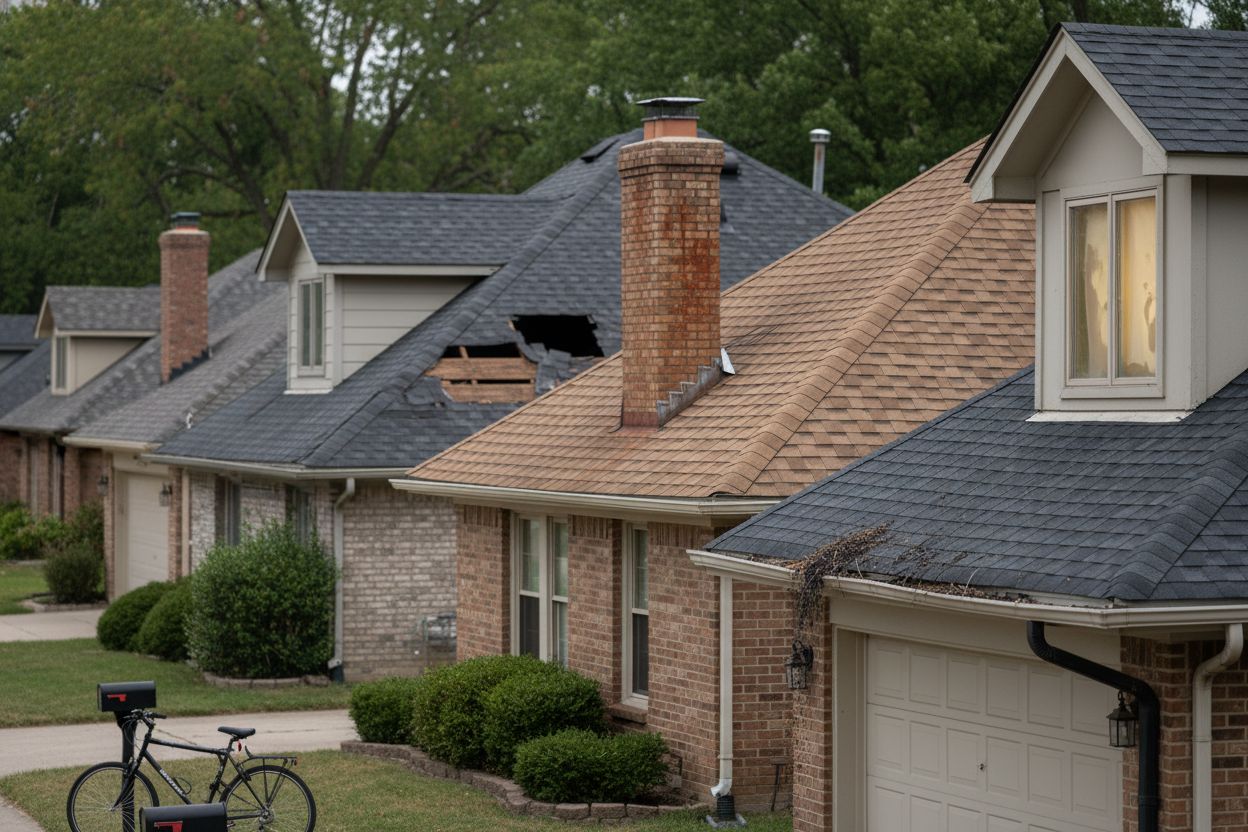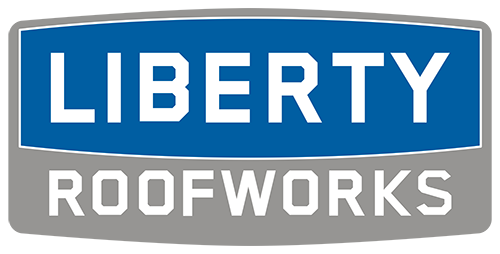Did you know that nearly 40 percent of home insurance claims are due to roof damage? Many problems start small and go unnoticed until they become costly headaches. Being able to spot the early warning signs and cut through common myths could save you thousands in repairs. This guide reveals the real causes, hidden indicators, and smart steps every homeowner needs to protect their most valuable investment.
Key Takeaways
| Point | Details |
|---|---|
| Recognize Early Signs of Damage | Homeowners should identify subtle signs of roof damage, such as water stains and cracked shingles, to prevent costly repairs. |
| Conduct Regular Inspections | Regular professional inspections are crucial to catch hidden issues before they escalate into significant problems. |
| Understand the Risks of Neglect | Ignoring roof damage can lead to structural deterioration, energy inefficiency, and safety hazards, resulting in high repair costs. |
| Choose Your Contractors Wisely | Selecting a reputable roofing contractor is essential for quality repairs; look for credentials, references, and transparent pricing. |
Table of Contents
- Defining Common Roof Damage Signs And Misconceptions
- Types Of Roof Damage And Their Causes
- Warning Signs To Watch For On Your Roof
- Risks Of Ignoring Roof Damage Signs
- Repair Costs, Insurance, And Contractor Selection
Defining Common Roof Damage Signs and Misconceptions
Understanding roof damage isn’t just about spotting obvious problems like massive holes or visible leaks. Many homeowners miss critical signs of roof deterioration that can lead to expensive repairs if left unchecked. Read our comprehensive guide on roof damage signs to help you identify potential issues before they become catastrophic.
According to research from Wikipedia, certain environmental conditions can create hidden roof damage that might not be immediately apparent. For instance, ice dams in cold climates represent a subtle but significant threat. These formations occur when snow melts and refreezes at roof edges, creating water backup that can compromise your roof’s structural integrity. This process demonstrates how heat loss and poor insulation can create damage even when the roof surface looks intact.
Another frequently misunderstood form of roof damage involves hail impact. Many homeowners assume that if no immediate crack is visible, their roof remains unharmed. However, research indicates that hail can cause microscopic damage to roofing materials like asphalt shingles and flat roofs. These subtle impacts might not leak immediately but can gradually compromise your roof’s protective capabilities, leading to potential moisture intrusion and long-term structural weakening.
To protect your home, it’s crucial to recognize these nuanced damage signs. Regular professional inspections, understanding your local climate’s challenges, and maintaining proper roof insulation can help prevent minor issues from becoming major, costly repairs. Remember: your roof is your home’s first line of defense against the elements, and early detection is always more cost-effective than extensive reconstruction.
Types of Roof Damage and Their Causes
Roof damage isn’t a one-size-fits-all problem. Structural compromises can emerge from multiple sources, each presenting unique challenges for homeowners. Learn more about roof damage prevention to protect your home’s most critical protective barrier.
According to the National Roofing Contractors Association (NRCA), wind damage represents one of the most prevalent roof threats. High-velocity winds can lift shingles, create punctures, and compromise roof edge integrity. Different wind speeds create varying levels of damage: mild winds might loosen shingles, while severe storms can completely remove roofing sections, exposing your home’s underlying structure to potential water intrusion and subsequent structural deterioration.
Another significant category of roof damage involves material degradation. This occurs through multiple mechanisms: UV radiation breaks down roofing materials, causing them to become brittle and crack; thermal expansion and contraction create stress points that weaken roof structures; and moisture accumulation leads to rot, mold, and structural compromise. Factors like poor initial installation, substandard materials, and lack of regular maintenance accelerate this degradation process.
Environmental factors play a crucial role in roof damage progression. Precipitation, whether rain, snow, or hail, constantly tests your roof’s resilience. Water can seep through microscopic cracks, freeze and expand in colder climates, and create progressive damage that might not be immediately visible. Regular professional inspections can help identify these subtle yet potentially catastrophic issues before they transform from minor repairs into major reconstruction projects.
Warning Signs to Watch For on Your Roof
Your roof speaks a language of subtle signals that can reveal critical health issues long before catastrophic failure occurs. Discover the key indicators of roof damage to protect your home’s most important structural defense.
According to research from Reimagine Roofing, interior warning signs are often the most overlooked indicators of potential roof problems. Small water stains on your ceiling, even if they seem insignificant, can signal serious underlying roof damage. Other critical interior indicators include sunlight visibly streaming through attic roof boards—which suggests structural gaps—and unexpected attic temperature extremes that point to poor ventilation or inadequate insulation.
Exterior warning signs manifest through multiple visual cues homeowners should monitor. Look for missing, cracked, or curling shingles, which compromise your roof’s protective barrier. Rusted flashing around chimneys, vents, and skylights indicates potential water intrusion points. Granule accumulation in gutters suggests advanced shingle deterioration, while blistering or peeling exterior paint can signal moisture problems directly linked to roof performance.

Pest activity and unexpected entry points represent another critical warning sign. Small holes, gnaw marks, or unexplained openings can indicate structural vulnerabilities that compromise your roof’s integrity.
![]() Regular visual inspections, particularly after severe weather events, can help you catch these subtle indicators before they transform from minor maintenance issues into expensive, large-scale repairs.
Regular visual inspections, particularly after severe weather events, can help you catch these subtle indicators before they transform from minor maintenance issues into expensive, large-scale repairs.
Here’s a comparison of common roof damage types, their causes, and warning signs:
| Damage Type | Common Causes | Warning Signs |
|---|---|---|
| Ice Dams | Snow refreezing Poor insulation |
Water stains Gutter overflow |
| Hail Impact | Storms Hailstones |
Dented shingles Granules in gutter |
| Wind Damage | High winds Storm events |
Missing shingles Lifted edges |
| Material Degradation | UV exposure Moisture Poor installation |
Cracked/brittle shingles Rot/mold |
| Precipitation | Rain Snow Hail |
Leaks Stains Paint blistering |
| Pest Intrusion | Small openings Structural gaps |
Gnaw marks Small holes |
Risks of Ignoring Roof Damage Signs
Procrastinating on roof maintenance isn’t just risky—it’s potentially financially devastating. Learn about the critical consequences of roof neglect before small problems become wallet-draining nightmares.
According to research from Nailed It Roofing, structural deterioration represents the most significant risk of ignoring early roof damage signs. Seemingly minor issues like granule loss and cracked shingles can rapidly escalate into comprehensive roofing failures. These small imperfections create pathways for water intrusion, which progressively weakens your home’s fundamental support structures. Water can silently penetrate roof layers, causing rot in wooden supports, compromising fascia and soffit integrity, and creating ideal conditions for mold growth that threatens both your home’s structure and your family’s health.
Energy inefficiency emerges as another critical consequence of roof damage. Damaged roofing materials compromise your home’s thermal envelope, allowing heat to escape during winter and cool air to dissipate during summer. This constant thermal leakage forces your HVAC system to work harder, dramatically increasing energy consumption and utility costs. What might start as a few loose shingles can transform into hundreds of dollars in unnecessary energy expenses annually.
Beyond financial implications, ignored roof damage poses significant safety risks. Compromised roofing structures can suddenly fail during extreme weather events, potentially causing catastrophic damage to your property or even risking personal injury. The cost of emergency roof replacement far exceeds the expense of regular maintenance and timely repairs. Proactive homeowners understand that a small investment in routine roof inspections can prevent thousands of dollars in potential damage and protect their most valuable asset—their home.
Repair Costs, Insurance, and Contractor Selection
Understanding the financial landscape of roof repairs can feel like navigating a complex maze. Learn the critical steps for managing roof repair costs before unexpected expenses catch you off guard.
According to research from Roof Magazine, full roof replacement in 2025 averages around $9,522, with most homeowners spending between $5,868 and $13,215. These costs fluctuate based on multiple factors including material selection, labor rates, tear-off expenses, and regional pricing variations. Minor repairs offer more affordable alternatives: research from Modernize indicates that replacing a few shingles can cost under $450, while more extensive repairs addressing roof decking, persistent leaks, or storm damage might reach up to $6,500.
Insurance navigation represents a critical component of roof repair financial planning. Most homeowner’s insurance policies cover roof damage caused by sudden, unexpected events like severe storms, fallen trees, or vandalism. However, damage resulting from normal wear and tear or neglected maintenance typically falls outside standard coverage. Documenting damage thoroughly, understanding your policy’s specific terms, and working with an experienced roofing contractor who can provide detailed damage assessments can significantly improve your chances of successful insurance claims.
Selecting the right roofing contractor is as crucial as managing repair costs. Look for professionals with comprehensive insurance, verifiable local references, and transparent pricing structures. Warning signs of unreliable contractors include demands for full upfront payment, significantly lower estimates compared to competitors, and inability to provide clear, written documentation of proposed work. Reputable contractors offer detailed inspections, multiple repair or replacement options, and clear explanations of potential long-term implications of different roofing solutions.
Protect Your Home by Acting on Early Roof Damage Signs
You just learned how easily hidden roof damage like ice dams, hail impacts, or wind can turn minor issues into expensive, disruptive problems. The article explained how stains on your ceiling, missing shingles, and poor insulation can all put your home at risk. Ignoring these warning signs brings headache, stress, and growing repair bills. Imagine saving yourself from the worry of future leaks, mold, or major structural failures just by addressing these signs right away.
At Liberty Roofworks, we specialize in residential roof repairs, full roof replacements, and storm damage solutions across Charlotte, NC. Our trusted team solves the exact challenges discussed above with fast and reliable services tailored for your home. If you think your roof might have unseen problems or you spot the warning symptoms outlined in the guide, now is the time to act before costs spiral. Explore our expert roof repair and replacement services and contact us today for peace of mind and long-term protection. Your roof protects everything you value—do not wait until the next storm to find out its limits.
Frequently Asked Questions
What are the early signs of roof damage to look for?
Early signs of roof damage include small water stains on ceilings, cracked or curling shingles, and rusted flashing around vents and chimneys. Regular inspections can help identify these signs before they lead to more extensive issues.
How can ice dams cause roof damage?
Ice dams form when snow melts and refreezes at the roof edges, leading to water backup that can compromise the roof’s structural integrity. Poor insulation and heat loss are common contributors to this problem.
What are the consequences of ignoring roof damage?
Ignoring roof damage can lead to structural deterioration, increased energy costs due to insulation failure, and safety risks from potential roof collapses. Prompt attention to minor issues helps prevent significant expenses later.
How do I choose the right roofing contractor for repairs?
Select a roofing contractor by ensuring they have comprehensive insurance, local references, and a transparent pricing structure. Avoid contractors who demand full upfront payment and provide vague or lower-than-average quotes.
